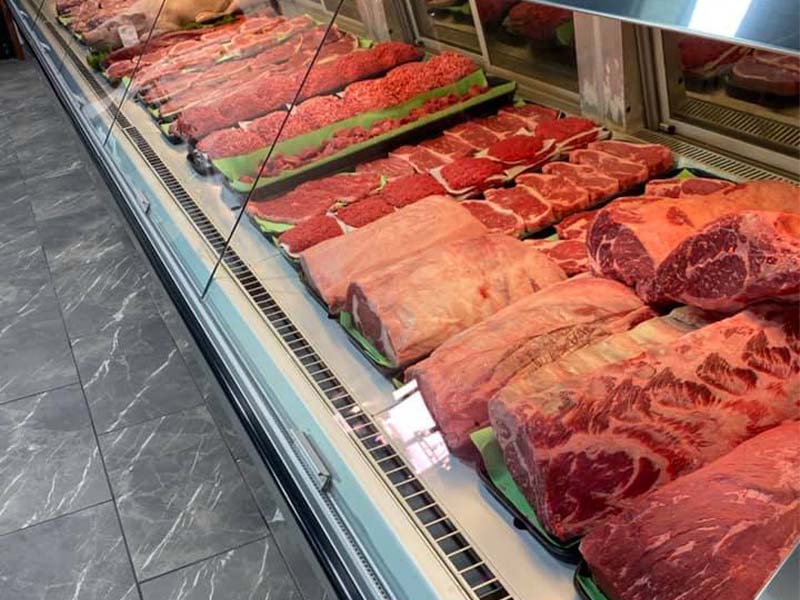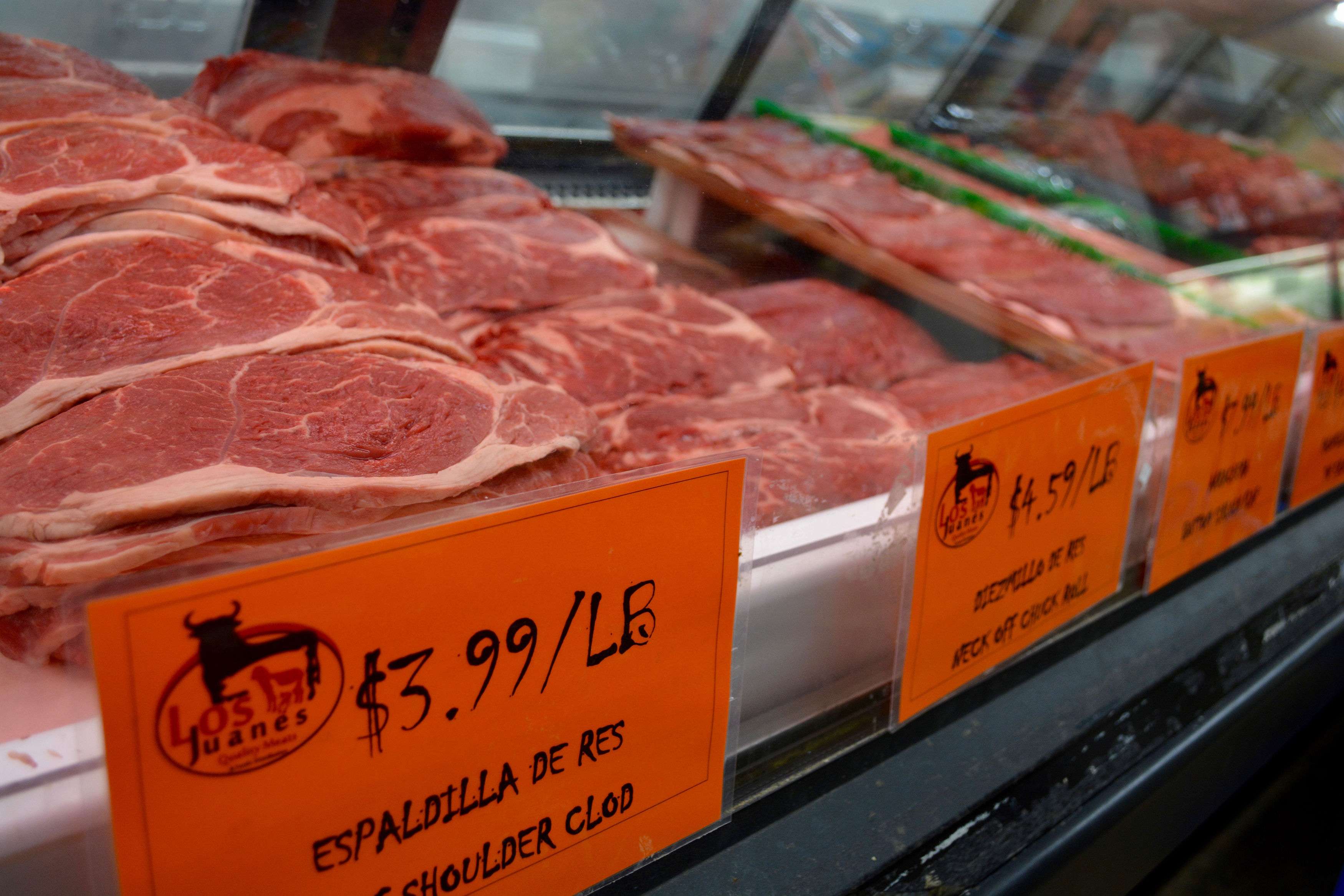Bagley Farms Meat Market Edwardsville IL: Your Trusted Source for High-Quality Meats
Bagley Farms Meat Market Edwardsville IL: Your Trusted Source for High-Quality Meats
Blog Article
Uncover the Art of the Butcher's Cut in a Modern Meat Market
In the ever-evolving landscape of contemporary meat markets, the butcher's cut has transcended its typical origins, merging olden workmanship with modern practices. What absolutely sets the modern-day butcher apart is their ability to build a deeper link in between consumers and the beginnings of their meat.
Advancement of Butchery Methods

The mid-20th century saw butchery methods even more refined by clinical understandings right into muscle mass biology and meat aging, enhancing both tenderness and preference. Technologies like vacuum cleaner packaging and refrigeration extended item shelf-life, permitting butchers to expand offerings and enhance high quality control. This duration likewise marked the rise of customized equipment, such as band saws and meat slicers, which enhanced precision and efficiency in meat handling.
Electronic systems currently aid in monitoring animal provenance and enhancing cuts to meet certain customer preferences. In addition, a revival in artisanal butchery has actually arised, blending standard abilities with contemporary expertise to cater to consumers looking for moral and sustainable meat choices.

Comprehending Meat Cuts

Understanding the intricacies of meat cuts is important for both butchers and consumers looking for quality and worth. For butchers, accurate cuts reflect ability and regard for the craft, ensuring minimal waste and ideal return.
The key classifications of meat cuts consist of primitive, sub-primal, and retail cuts. Butchers then damage these down further into sub-primal cuts, prior to ultimately producing retail cuts available to customers, like ribeye or tenderloin.
Recognizing muscle structure is important; muscular tissues used much more regularly by the animal have a tendency to be harder and are best matched for slow cooking techniques, while less-used muscular tissues, like those located in the loin, are much more tender and perfect for grilling or roasting. Familiarity with these distinctions encourages customers to make enlightened choices, enhancing their culinary endeavors.
Picking Top Quality Meat
Choosing the right meat includes even more than simply picking an aesthetically attractive item from the screen. The art of choosing top quality meat needs a critical eye and expertise of particular qualities that signify quality and quality.
Secondly, take into consideration the marbling, which describes the white flecks of fat within the muscular tissue. Appropriate marbling is a crucial sign of tenderness and flavor, as it melts throughout food preparation, improving the meat's juiciness. Bear in mind, higher marbling usually associates with superior high quality cuts, such as USDA Prime.
Appearance is an additional essential variable; meat ought to really feel solid to the touch, not slimy or overly soft. Furthermore, bear in mind the scent. Fresh meat should have a clean, neutral scent, without any sour or off-putting smells.
Combining Cuts With Cooking Techniques
Efficiently matching cuts of meat with the ideal cooking techniques is essential for accomplishing optimal taste and appearance. Different cuts vary in inflammation, marbling, and connective cells content, each needing certain strategies to open their possibility. Tender cuts like filet mignon and ribeye, with their integral marbling, advantage from high-heat, quick-cooking methods such as grilling or pan-searing. These techniques boost the meat's all-natural tastes and ensure a juicy finish.
Conversely, tougher cuts like brisket and chuck roast are abundant in collagen, which breaks down right into jelly when prepared gradually. These cuts are suitable for braising or slow-moving roasting, permitting the meat to soften with time and create deep, complicated tastes. Cuts such as brief ribs and pork shoulder get on well with slow-cooking methods, where extended cooking times change their durable structures right into delicious meals.
Lamb shanks and oxtail, which require prolonged food preparation to soften, are see this page best candidates for cooking or slow simmering. These methods coax out abundant, passionate flavors while keeping wetness. By comprehending the distinct characteristics of each cut, cooks and home cooks alike can elevate their cooking creations, ensuring each recipe is both satisfying and memorable.
The Butcher's Duty Today
Browsing the advancing landscape of the contemporary meat market, the butcher's duty today prolongs past mere preparation of cuts. Contemporary butchers are cooking artisans, teachers, and supporters for sustainable practices.
In addition to crafting specific cuts, butchers now engage straight with customers, providing cooking suggestions and tailoring selections to fit specific needs and preferences. Their competence in meat aging, marbling, and taste accounts empowers consumers to make educated choices, improving their cooking experiences. This personalized service exemplifies the butcher's progressing duty as a trusted advisor in the kitchen area.
Additionally, butchers are pivotal in reducing waste, making use of entire pets to create diverse products such as sausages and stocks - bagley farms meat market edwardsville il. This detailed technique not just values the pet news however likewise aligns with contemporary sustainability goals. In this means, the modern-day butcher personifies both tradition and innovation, adjusting to an ever-changing market while preserving the virtuosity and stability of their craft

Verdict
The contemporary butcher's craft intricately weaves typical methods with modern technologies, highlighting sustainable methods and ethical sourcing. Proficiency in comprehending diverse meat resource cuts and top quality signs encourages butchers to supply informed referrals, lining up details cuts with ideal food preparation techniques. This knowledge not just raises cooking experiences however additionally enhances the link between customers and the origins of their food. By honoring historic practices while welcoming contemporary needs, the butcher's role stays essential in today's innovative meat market.
Report this page